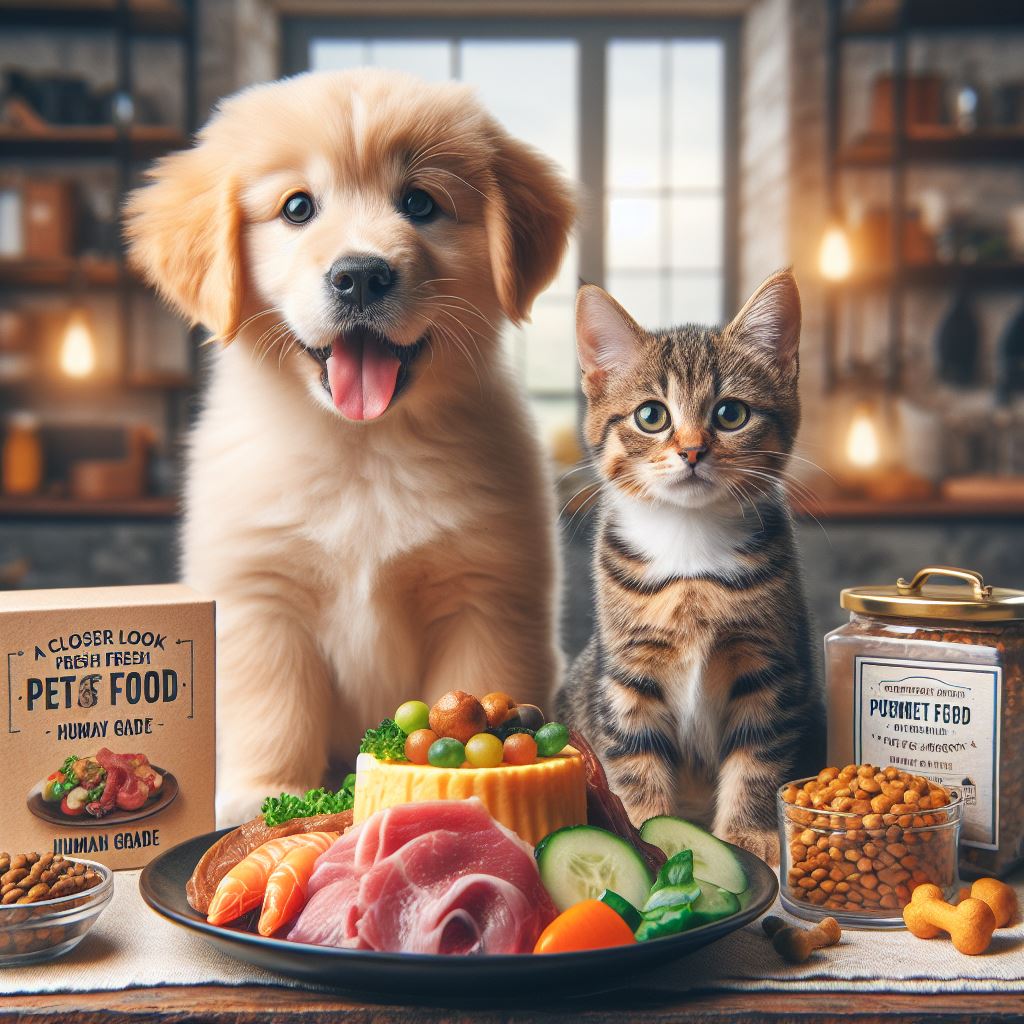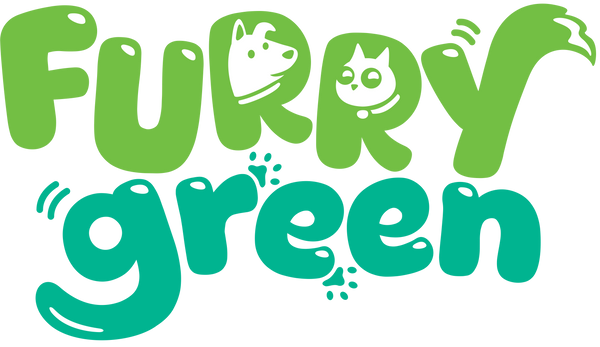
Human-Grade Pet Food: A Closer Look at Cats and Dogs Daily Delicacies
Share
The Truth About Human-Grade Pet Food: What Your Pets Really Deserve 🐱🐶
✨ Quick Bites: TL;DR
- Human-grade means the food meets the same quality and safety standards as your food.
- It contains real ingredients only—no mystery meats or sketchy by-products.
- Gentle processing helps preserve nutrients for better absorption and happier tummies.
Ever stood in the pet food aisle feeling completely overwhelmed? Endless rows of colorful bags and cans shout buzzwords like “human-grade,” “all-natural,” and “premium quality.” But do these terms actually translate into better nutrition for your pet—or are they just clever marketing?
For many urban pet parents living in compact apartments, the stakes are even higher: you want the healthiest food for your companion, but space, budget, and practicality matter too. Let’s decode the truth about human-grade pet food and what it really means for your pet’s health.
What Does "Human-Grade" Actually Mean?
The Legal Definition
“Human-grade” isn’t just advertising fluff—it’s a regulated term. According to the Association of American Feed Control Officials (AAFCO), for a pet food to legally be called human-grade:
- Every single ingredient must be edible by human standards.
- The final product must be manufactured, packed, and stored in facilities licensed for human food production.
- Safety standards are the same as for human food, overseen by USDA or FDA inspections.
That means if the bag says “human-grade chicken,” it’s real chicken breast or thigh, not by-products like feathers or feet processed into “chicken meal.”
Why Processing Methods Matter

- Conventional Pet Food Manufacturing: Uses high-heat extrusion (>150°C). This extends shelf life but can destroy heat-sensitive nutrients.
- Human-Grade Preparation: Often uses gentle methods like sous vide (~80°C), which preserve proteins and vitamins while ensuring food safety.
- Veterinary Perspective: Gentle cooking reduces contamination risks while preserving digestibility—important for urban pets with limited exercise and higher risk of obesity or kidney disease.
Why Your Pet Will Thank You 🐶🐱
- Better Health: Premium ingredients mean better nutrition.
- Fewer Allergies: No common triggers or fillers means happier pets.
- Peace of Mind: You know exactly what's in their bowl!
Comparison: Human-Grade vs. Conventional vs. Raw Diets
| Feature | Human-Grade | Conventional Kibble | Raw Diets |
|---|---|---|---|
| Ingredient Quality | Human-edible meats, veggies, grains | By-products, rendered meals allowed | Raw meats, bones, organs |
| Processing | Gentle cooking (steam, sous vide) | High-heat extrusion | Minimal/no cooking |
| Safety | USDA/FDA regulated, low contamination | Generally safe, but recalls occur | High risk of Salmonella, Listeria, E. coli |
| Shelf Life | Refrigerated/frozen, 1–3 months | 12–18 months | Very short, needs freezer space |
| Nutrition | Balanced, highly digestible | Balanced but nutrient loss from heat | Variable, often unbalanced |
| Cost | $$$ | $ | $$-$$$ |
| Best For | Sensitive digestion, quality-focused owners | Budget-conscious convenience | Niche feeders accepting higher risk |
The Hidden Health Benefits Your Pet Will Experience
Switching to human-grade food is more than just better ingredients—it creates a ripple effect of health improvements:
- Improved Hydration: Fresh diets contain 70-80% water vs. 6-10% in kibble. This naturally combats mild dehydration, especially important for cats and seniors prone to kidney issues.
- Better Digestive Health: Gentler processing and identifiable proteins reduce GI stress. Firmer stools, less gas, and fewer vomiting episodes are common.
- Enhanced Nutrient Absorption: Nutrients stay intact, fueling shinier coats, improved immunity, and higher energy.
- Weight Control: Higher protein and moisture promote satiety, helping to prevent obesity—one of the most common health problems in city pets.

Case Study: Bella the Cat
Bella, a 7-year-old domestic shorthair, lived with her owner in a cozy apartment. For years, she ate only dry kibble. Over time, Bella developed chronic constipation, producing small, hard stools every few days.
After switching to a human-grade wet diet with higher moisture content and more digestible protein, Bella’s stools became softer and more regular within three weeks. Her coat also grew shinier, and she became more playful.
💡 Takeaway: Increased hydration and gentle processing in human-grade diets can significantly improve digestive health, especially for cats prone to constipation or urinary problems.
The Hydration Game-Changer 💧
Here's something wild: Many pets are walking around dehydrated without anyone noticing! Just like us humans, when your pet feels thirsty, they're already dehydrated. Yikes! 😮
Think of your pet's body like a well-oiled machine. Without proper hydration, everything starts to slow down—from digestion to organ function. Add dry food packed with chemicals to the mix, and you've got a recipe for digestive troubles! 🚫
The Furry Green Difference ✨
Our Secret Weapon: Sous Vide Cooking 🌟
At Furry Green, we use gentle sous vide cooking to prepare our meals. This method ensures food safety while locking in the natural moisture, flavors, and nutrients of our premium ingredients.

What Makes Us Special:
- 🥩 Premium human-grade ingredients
- 🦌 Unique proteins like venison and ostrich for sensitive pets
- 👨🍳 Prepared under strict food safety regulations in Hong Kong
- 🌱 Sustainable and eco-friendly practices
Safety First, Always! 🛡️
Unlike regular pet food, our human-grade products undergo rigorous inspections and follow strict food safety laws. When you open our packaging, you can actually see the real ingredients—that's transparency you can trust! 👀
Ready to Make the Switch? 🌱
Give your furry friend the gift of better nutrition. Take the first step towards a healthier, happier pet today!
Shop Furry Green MealsPractical Considerations for Urban Pet Parents
- Storage Solutions: Human-grade food is perishable. Look for smaller portion sizes or subscription deliveries to fit limited fridge/freezer space.
- Budget-Friendly Approaches: Start by replacing one meal a day or using fresh food as a topper. Health improvements may reduce future vet bills.
- Gradual Transition: Introduce new food slowly—start with 25% new food mixed with 75% old food, increasing the amount over a week to avoid digestive upset.
- Helper & Pet Sitter Training: Make sure anyone assisting with feeding knows to refrigerate/thaw food properly. Leftovers should be discarded after 2 hours at room temperature.
Frequently Asked Questions
Is 'human-grade' just a marketing term?
No, 'human-grade' is a legally regulated term. According to the Association of American Feed Control Officials (AAFCO), it means that every ingredient must be edible by human standards, and the final product must be manufactured, packed, and stored in facilities licensed for human food production.
What's the difference between human-grade and a raw diet?
Human-grade refers to the quality and safety standards of the ingredients and manufacturing process, which often involves gentle cooking methods like sous vide. A raw diet involves feeding uncooked ingredients. While some raw diets use high-quality ingredients, they carry a higher risk of pathogens like Salmonella and E. coli for both pets and humans.
Is human-grade food automatically healthier for all pets?
Human-grade ensures ingredient quality and safety, but the food must also be nutritionally balanced for a pet's specific needs (e.g., for a dog or cat) according to standards like AAFCO. A diet of only human-grade chicken breast, for example, would be unbalanced and lead to malnutrition. Always look for a statement of nutritional adequacy on the packaging.
References
- Association of American Feed Control Officials (AAFCO). (2023). AAFCO definition of human-grade. aafco.org
- U.S. Food and Drug Administration (FDA). (2022). Pet food: What’s in it? fda.gov
- Freeman, L. M., et al. (2013). Current knowledge about the risks and benefits of raw meat–based diets for dogs and cats. Journal of the American Veterinary Medical Association (JAVMA).
- Kaplan, J. L., et al. (2018). Taurine deficiency and dilated cardiomyopathy in golden retrievers fed commercial grain-free diets. PLoS ONE.
- Kaplan, J. L., Stern, J. A., Fascetti, A. J., et al. (2018). Taurine deficiency and dilated cardiomyopathy in golden retrievers fed commercial grain-free diets. PLoS ONE, 13(12), e0209112.
- Strohmeyer, R. A., Morley, P. S., Hyatt, D. R., Dargatz, D. A., & Scorza, A. V. (2006). Evaluation of bacterial and protozoal contamination of commercially available raw meat diets for dogs. Journal of the American Veterinary Medical Association (JAVMA), 228(4), 537–542.
- eClinPath. (2023). Nutrition and feeding practices. Cornell University College of Veterinary Medicine. Retrieved from: https://eclinpath.com
